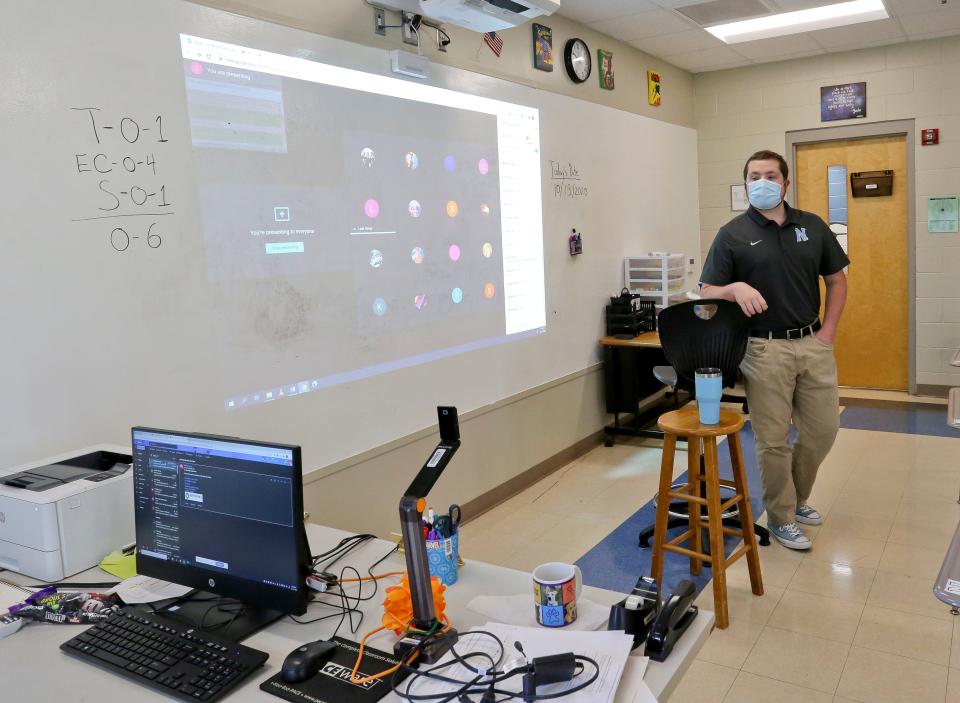Reading scores drop, math scores low. Will high school seniors be ready for graduation?
American high schoolers are approaching graduation with less of a grasp on reading and still-low math scores – and that's before factoring in the pandemic.
The average reading score for high school seniors dropped between 2015 and 2019, while math scores for those soon-to-be-graduates remained flat, according to the latest round of national test results released Wednesday.
And just as in many other aspects of American society, the divide between the academic haves and have-nots keeps growing. The most-proficient 12th graders – those with scores at the top of their class – are scoring better in reading than they did nearly 30 years ago. The least-proficient 12th grade readers are even further behind than they were in 1992, with scores that declined in that time period.

The latest look at reading and math achievement for students on the cusp of graduating comes from the National Assessment of Educational Progress, also known as the Nation's Report Card. The exams are overseen by a branch of the federal government.
The declines for seniors resemble the decline in reading scores for fourth- and eighth-grade students, where the least-proficient students are losing the most ground. National test results for the younger students were released in October 2019.
U.S. students at a plateau: At 4th and 8th grade, reading and math scores haven't budged
The pattern of decline concentrated among the lowest-performing students – across multiple grade levels and subjects – is an urgent problem, said Peggy Carr, the testing agency's associate commissioner of assessment.
In math, the overall average score for 12th graders held steady between 2015 and 2019. But beneath that average is a familiar trend: Scores for the lowest-performing students dipped. Since 2005, the only seniors to post a little improvement in math were those in the highest-performing bracket.
That's, of course, a good thing for those high achievers – most of whom tend to come from economically stable backgrounds. But it's worrisome for the futures of the lowest-performing students, who tend to be economically disadvantaged.
All races are represented in those lowest-performing students, but Black and Latino students make up the largest share, Carr said.

How do the NAEP exams work?
The national assessments were given to more than 52,000 public and private school 12th graders between January 2019 and March 2019. Student performance is grouped into categories such as basic, proficient or advanced.
The bar for proficiency is high: Only 24% of seniors scored at or above "proficient" in math in 2019. That figure hasn't changed significantly since 2005, the first administration of this math assessment for seniors.
Meanwhile, the percentage of seniors scoring "below basic" in math increased to 40% in 2019, up from 38% in 2015.
In reading, 37% of seniors scored at or above proficient in 2019. That's about the same as in 2015, but down from 1992, when 40% of U.S. seniors scored at least proficient on the exam.
The exams also survey students about what they're doing inside and outside the classroom. Half of seniors in 2019 said they read literature outside of school at least once or twice a year. Around 1 in 4 seniors said they never read stories or novels outside of school.
Parents guide to online school: 9 questions to help vet your school's program
Why are scores still so low?
A number of factors could explain the stagnation and disparities in scores, assessment experts said.
High school graduation rates have improved, which means more lower-performing students are staying in school – and therefore are part of the testing pool. Student poverty rates have increased, and poverty generally tracks with lower academic performance. And, as technology and broadband internet have become increasingly necessary for learning, the U.S. also has been wracked by major disparities in access, laid bare recently by the pandemic and remote learning.
Andrea Johnson, an English teacher at Salem High School in Virginia, said her school also has seen a rapid rise in the number of students learning English.
"That's going to affect reading test scores," said Johnson, who is also Virginia's 2020 teacher of the year.
Virginia has pushed schools to double-down on literacy instruction since the last round of NAEP scores, Johnson said. At all grade levels, teachers are helping lower-performing readers by giving them a text that's at their level, paired with a text that's on grade level, so they can understand the material while also making comparisons, she said.
Teachers also have to figure out ways to better hook students on reading, she added.
"How do we balance the literary canon and texts they need for understanding with student choice, where they can read something where they see themselves reflected as the hero?" Johnson said.
Sarah Brown Wessling, an English teacher at Johnston High School in Iowa, has been teaching for 23 years. Moving students to proficiency hinges on an enormous number of factors, she said.
In school, that could mean making sure teachers have enough time to give all students individual attention. Or it could mean retaining teachers of color so that an increasingly diverse student population sees themselves represented in the people guiding them.
School and success do not operate in isolation from the rest of society, she added.
"If we're not talking about the big picture, from health care to mental health and even immigration, then we're not really serious about moving students from Point A to Point B," Brown Wessling said. "Otherwise, we're really good at moving students who are already winning."
Contact Erin Richards at (414) 207-3145 or erin.richards@usatoday.com. Follow her on Twitter at @emrichards.
This article originally appeared on USA TODAY: Reading level, math test scores: Will seniors be ready for graduation?

